Accidentally formatted your USB flash drive and lost important files? Wondering if it is possible to recover data from formatted USB drive? Read this guide to learn how to restore your files using the best data recovery software available.
“Accidentally formatted my drive, what’s the best way to recover? I went to format the secondary hard drive and accidentally formatted my USB drive. I thought I had a backup of the drive but didn’t. What’s the best software or way to recover the files on there?”reddit.com
Accidental disk formatting happens often, as experienced by the user above. Whether it is a USB flash drive or an internal hard drive partition, one wrong click can remove everything in seconds. But what exactly happens during disk formatting? How is it different from simply deleting a file? And is there any chance of getting your data back?
In this guide, I will walk you through what formatting really means, when recovery is still possible, and how to get your files back from a formatted USB drive. Continue reading.
Understanding USB Drive Formatting
Unlike simply deleting individual files, formatting a USB drive resets the entire file system and removes all file references. There are typically two types of disk formatting: quick format and full format. Though both of them remove all the files on the disk, what happens inside the drive is quite different, and this affects the possibility of data recovery.
Quick Format vs Full Format
A quick format only removes the file system table but leaves the actual data intact on the disk, even though the files are not visible to you. In most cases, the files are still recoverable after a quick format.
On the other hand, a full format not only removes the file system table but also scans the drive for bad sectors. During this process, parts of the disk and the lost files may be overwritten, which can make data recovery much more difficult or even impossible.
After understanding the differences between a quick format and a full format, you should now have a basic idea of when it is possible to recover data from a formatted USB drive. More information is provided below.
Can You Recover Data From a Formatted USB Drive
Recovery is possible when:
- The USB drive is not fully formatted.
- The lost data has not been overwritten by new files.
- The USB drive is physically healthy.
Recovery is unlikely when:
- The USB drive has been fully formatted.
- The lost data has been overwritten by new files.
- The USB drive is physically damaged.
Things to avoid after formatting:
- Stop using the formatted USB drive immediately to prevent data overwriting.
- Avoid inserting or ejecting the drive frequently.
- Do not to format the drive many times.
- Use professional and free data recovery software to recover files as soon as possible.
How to Recover Data From Formatted USB Drives
Now, I will explain how to recover data from a formatted pen drive/USB drive in detail. When it comes to USB drive data recovery, MiniTool Power Data Recovery is an excellent solution.
As a green and secure data recovery software specialized for Windows, it supports restoring all types of files from your storage devices without causing any damage to the original data and disk. It offers multiple editions, and the free edition allows you to recover 1 GB of data at no cost.
Click the button below to download this tool and follow the steps to recover formatted USB drive free.
MiniTool Power Data Recovery FreeClick to Download100%Clean & Safe
Step 1. Launch the recovery software to enter the main interface. Your USB drive should appear under the Logical Drives section with a USB icon. Locate the target drive and click the Scan button to start scanning for lost files.
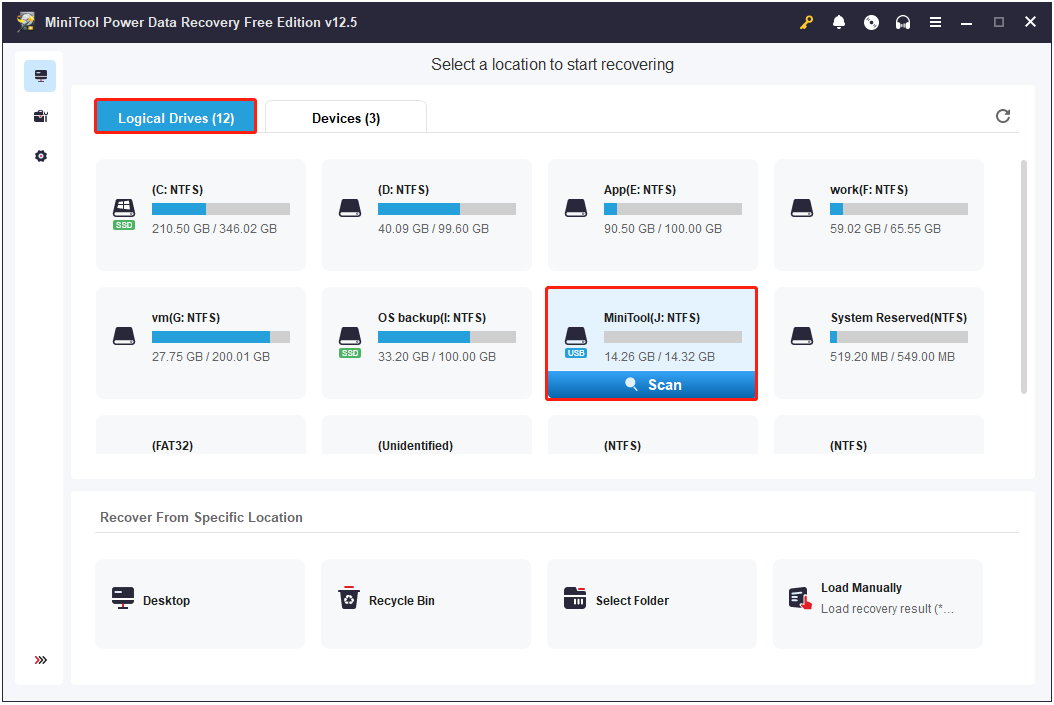
Step 2. To get the best and most complete scan results, it is important to let the scan finish automatically rather than interrupting it halfway.
Once the scan is complete, all found files will be displayed under the Path and Type tabs.
- If you want to locate your files according to the original folder structure, stay on the Path tab and expand each folder to browse your files.
- If you prefer to view files by file type and format, switch to the Type tab and focus on the target file type.
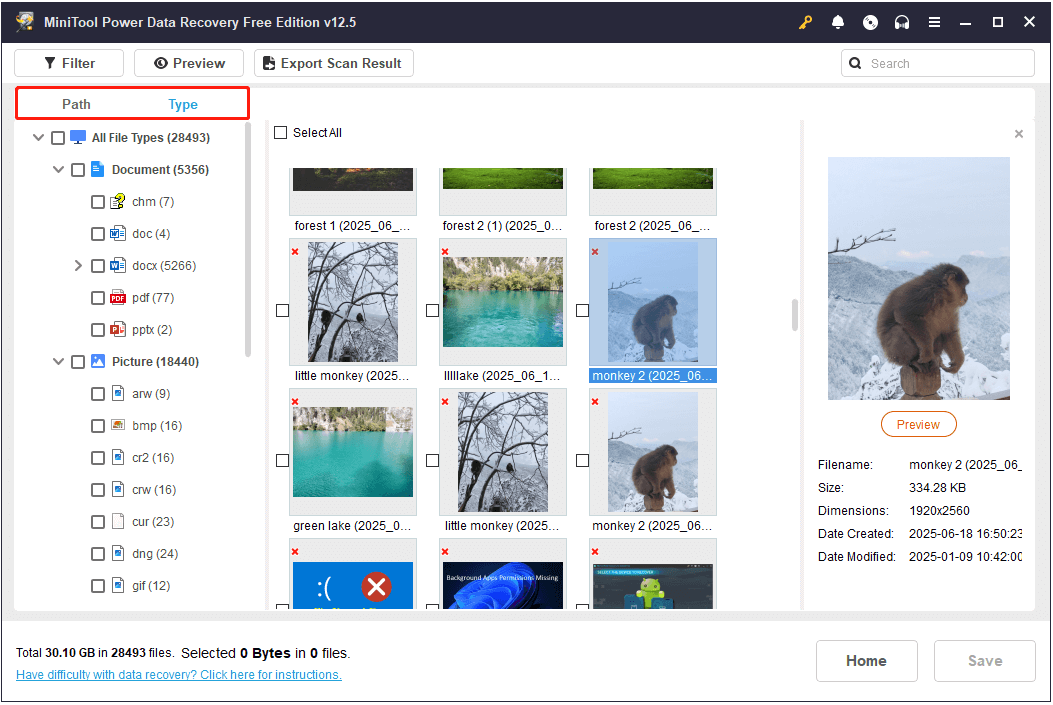
In addition, this easy-to-use recovery tool provides you with other two features to help you locate your files more easily.
- Filter: Click Filter, and then you will be able to exclude unwanted files by file type, file modification date, file size, and file category.
- Search: Type a partial or complete file name into the search box and press Enter to view matching results.
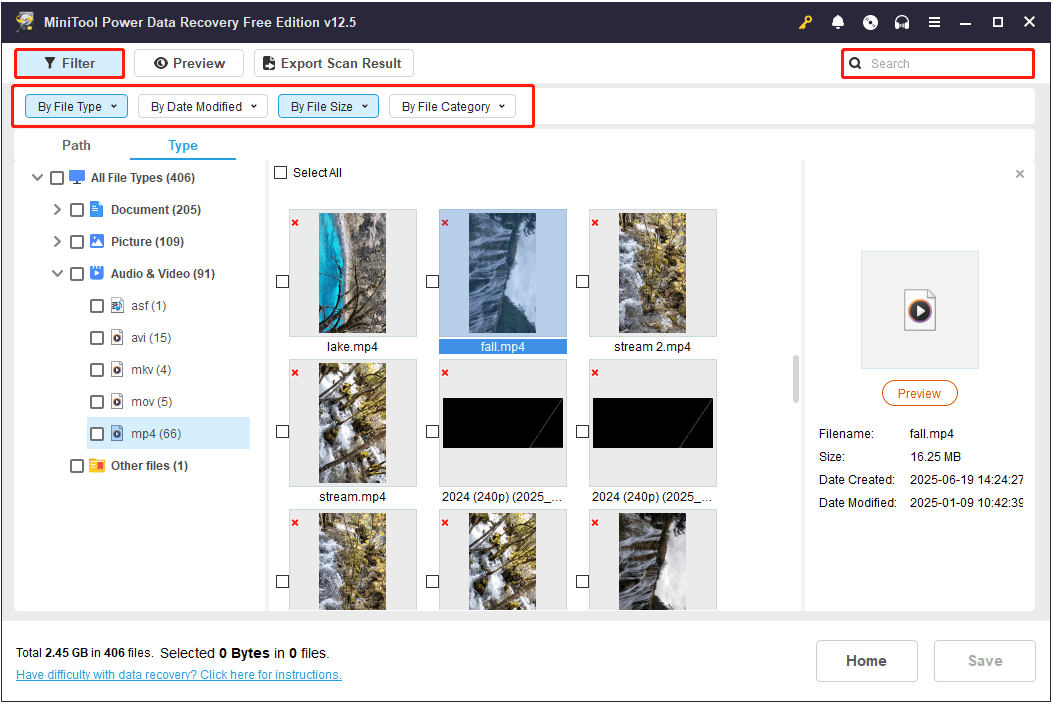
Step 3. Double-click on each file to preview all the target files. Then, tick the files you want to recover and click Save. You will be prompted to select a location to store the recovered files. Choose another disk and click OK to start the recovery.
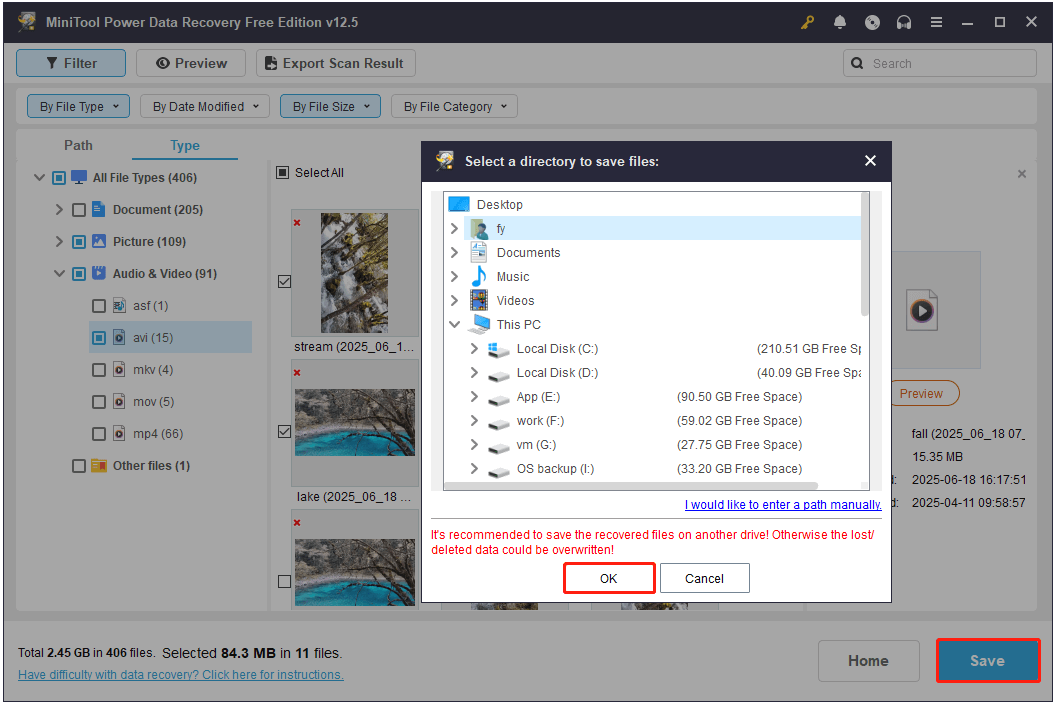
Once the recovery is completed, you can access the target location to view and use your files. As mentioned earlier, the free edition of this tool only supports recovering 1 GB of data. If you need to recover more, upgrade to a Personal or Business edition. Check MiniTool Power Data Recovery License Comparison.
More Information About MiniTool Power Data Recovery
Apart from the features introduced above, the MiniTool file restore tool also performs excellently in the following scenarios:
- It works great on a wide range of file storage devices, including SSD data recovery, SD card recovery, hard drive data recovery, CD/DVD recovery, and more.
- It can recover data lost due to accidental formatting, mistaken deletion, lost or deleted partitions, file system corruption, virus attacks, and so on.
- The full editions of this recovery tool support creating a bootable recovery media and restoring files from an unbootable computer.
This is all about how to recover formatted flash drives by using MiniTool Power Data Recovery.
Turn to Data Recovery Services
If MiniTool Power Data Recovery fails to retrieve your files after formatting, your disk or data may be in a more complex state. In this case, it is recommended to consult a professional data recovery service. These services often have advanced equipment and techniques beyond software capabilities, which can significantly improve the chances of recovery.
Recover Formatted USB Drive on Mac
If you are using a Mac computer, is there any data recovery software that can help you restore files from a formatted USB drive by yourself? Absolutely yes.
Stellar Data Recovery for Mac is a powerful tool designed for macOS users. It can deeply scan formatted partitions or volumes to recover lost data. The Premium edition also supports video repair and photo repair.
You can download the software and scan your USB drive for free to see what files are recoverable. However, a license is required to save the recovered files.
Data Recovery for MacClick to Download100%Clean & Safe
How to Prevent Future Data Loss on a USB Drive
Though there are many data recovery tools and services for Windows and macOS, none can guarantee 100% successful file restoration. So, instead of spending a lot of effort trying to recover lost files, it is better to take some simple steps to prevent data loss or the need to format your USB drive. Here are some tips to help protect your files and avoid disk failure.
Back up USB Drive Regularly
Prevention is better than cure. No matter how data is lost or how the disk is corrupted or damaged, as long as you have a complete and recent backup, data recovery is easy and 100% successful. Therefore, it is crucial to develop a good habit of storing important files in multiple locations instead of relying solely on a USB drive.
You can upload files manually to cloud drives or use professional backup software to create backups. Recommended cloud services include Google Drive, Dropbox, and others. A recommended backup tool is MiniTool ShadowMaker.
I will briefly demonstrate how to use MiniTool ShadowMaker to back up files on a USB drive (or another disk).
Step 1. Download and install the trial edition of MiniTool ShadowMaker which supports a 30-day free trial.
MiniTool ShadowMaker TrialClick to Download100%Clean & Safe
Step 2. Launch the software and go to the Backup tab. In the right panel, click SOURCE to select the files/folders or partitions/disks you want to back up. Then click DESTINATION to select the drive you want to use to store the backup files.
Step 3. Click Back Up Now to start the backup process.
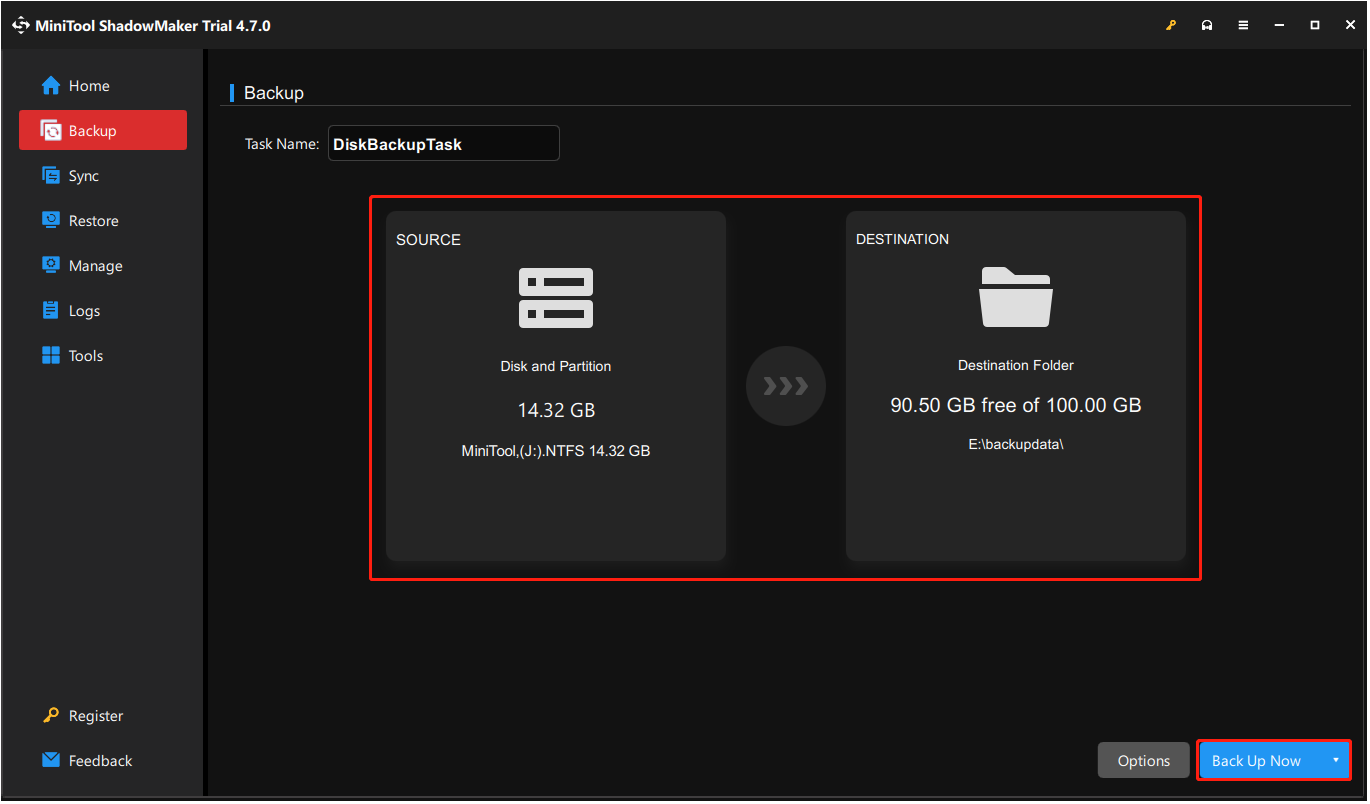
Keep an Eye on USB Health
Monitoring the health of your USB flash drive helps you detect potential problems early and avoid situations where you have to format the disk. Here are some practical steps you can take:
- Use diagnostic software like CrystalDiskInfo to check detailed information about your drive’s condition.
- Use Windows’ built-in Error Checking tool to scan the drive for file system errors (In File Explorer, right-click the drive and choose Properties. Under Tools, click Check).
- Inspect the USB drive regularly for physical damage, such as wear, cracks, etc. If you notice any damage, transfer your files immediately and replace the drive.
Avoid Formatting the USB Drive Immediately When Problems Occur
When your USB drive shows as corrupted, not recognized, or asks to be formatted, do not format it right away because formatting will delete all your files. Sometimes, the file system or other problems can be fixed quickly without formatting.
You can try easy steps first: unplug and plug the drive back in, use a different USB port, update the disk driver, or run the Error-Checking tool to fix the file system issues.
If none of these methods work to fix your USB drive, then you can think about formatting it. But before formatting, always try to recover your files with MiniTool Power Data Recovery, unless you want to erase everything on the disk.
Conclusion
To sum up, whether a formatted USB drive can be recovered depends on several factors, such as the formatting method, the physical condition of the drive, and more. You can try using MiniTool Power Data Recovery to scan the USB drive. If it does not find your files, consider turning to a professional data recovery service for further help.
For any questions or suggestions regarding the use of MiniTool products, you can feel free to contact us via [email protected]. We are ready to help.
Recover Data From Formatted USB Drive FAQ
If that does not work, you can use a professional data restore tool like MiniTool Power Data Recovery to check whether the USB drive can be detected.





User Comments :